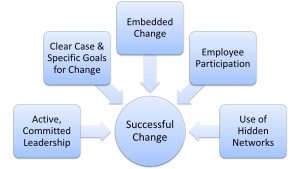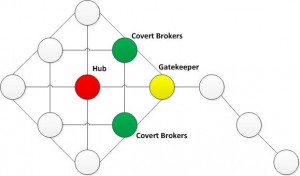The Times They Are A Changing… Always!: Five Elements of Successful Change Leadership
The pace of change shows no signs of slowing down. Globalization, hyper-connectedness, and immediate communication have changed the marketplace significantly and permanently. As a result, 81% of managers in one study report that the pace of change has increased compared to five years before. And 69% say that their companies experienced disruptive change within the last 12 months (AMA 2007).
We know that planned change initiatives, more often than not, disappoint. A McKinsey study reports that only 38% of change initiatives were completely or mostly successful improving performance (2006). So how do we make things better?
The Five Elements of Successful Planned Change
Active, committed change leadership.











